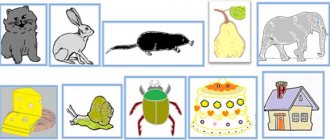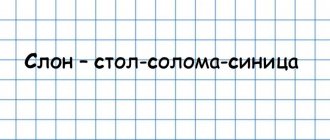We walk and talk
You can develop the speech of younger preschoolers on walks. Such “activities” are very natural, bring children a lot of impressions, and contribute to their knowledge of the world. While walking, the baby will begin to ask a lot of questions, many of which encourage the thought process and require the expression of emotions and thoughts using words. And all parents can do is communicate with the child, expanding his vocabulary, enriching his knowledge. This is how the child learns new words and concepts that will soon become mandatory in his everyday speech. Don't be afraid that the baby won't understand you. During these valuable moments of communication, the baby listens and learns to perceive his native speech.
“Did you know that walking is one of the most effective ways to develop a child’s speech? All that remains is to organize it correctly.”
During the walk we recommend:
- describe everything that surrounds you
- keep your baby interested in what is happening around him
- use different parts of speech to name objects, their signs and actions
- speak emotionally and intonation richly, in a calm tone.
How to develop a child's speech at 3 years old
It is obvious that the baby needs help to fully master speech. Let's consider some available ways and methods for developing speech skills in early preschool age.
Our speech is characterized by numerous associative connections. This should be used to help the preschooler learn more words and more actively include them in his statements.
Linguists explain that every concept necessarily has a set of words associated with it, and this set is called an associative field. Parents can effectively help preschoolers assign such fields. If your child notices a cat or dog, ask him what kind of cat or dog he is. Even a three-year-old will search for words to describe them. If a child takes an apple, ask what kind of apple it is.
There are many associative connections in fairy tales. Stories that are easy to understand for children contain interesting and easy-to-remember phrases. After listening to fairy tales, younger preschoolers repeat: “the egg is not simple, but golden”, “once upon a time”, “bun-bun, I will eat you” and similar stable expressions. Fairy tales contain enormous potential for the development of children's speech (Possibilities of fairy tales).
It is useful to use finger games for children. Physiologists have convincingly proven that the level of speech development in children depends on the degree of development of fine motor skills.
Development of coherent speech in preschoolers and primary schoolchildren
It is difficult to overestimate the importance of developed speech in a child. All parents want their child to be successful and developed. This is largely influenced by the child’s literate speech.
Content:
- Stages of speech development
- Why develop a child's speech?
- How to develop speech in children?
- How to quickly develop the speech of a primary school student?
The baby’s speech should develop correctly from early childhood. Track how your child's speech develops until the age of three. It is very important. If there is a lag, then I recommend not leaving this problem without the attention of specialists.
Educational didactic games
At the age when the child gradually moves from babbling to words (1.5-2 years), you can start playing useful didactic games with him for speech development:
- “What object is this?” The mother takes the prepared toy out of the bag, describes it, and then offers to describe it to the baby.
- “Guess what toy.” There are 3-4 toys in front of the baby. Mom describes one of them, and the baby guesses it from the description.
- “Describe the doll.” The mother invites the child to describe the doll in detail.
- "Mystery Box" Mom put themed pictures in a bright box in advance. The kid takes out one picture at a time and describes what he sees.
- “Tell me what object?” The child takes toys out of the box and names their characteristics (adjectives).
- "Wonderful cubes." The baby throws a dice with pictures. The red picture appears - the child says what he sees and gives a description of the depicted object.
- “Where is the toy?” The mother lays out toys in the room and invites the child to name where each of them is located. Mom should tell the baby how to correctly use the words “in”, “on”, “behind”, “under”, “about”, “next to”, “between”, “right”, “left”.
- "Postcard". The mother shows the child postcards with images of people and animals performing different actions. The child must name what action is depicted on the postcard.
These games are suitable for children from 1.5 to 4 years old. There are many such games. Parents, if desired, can come up with them themselves, making activities with their baby enjoyable leisure time, full of the joy of new discoveries.





